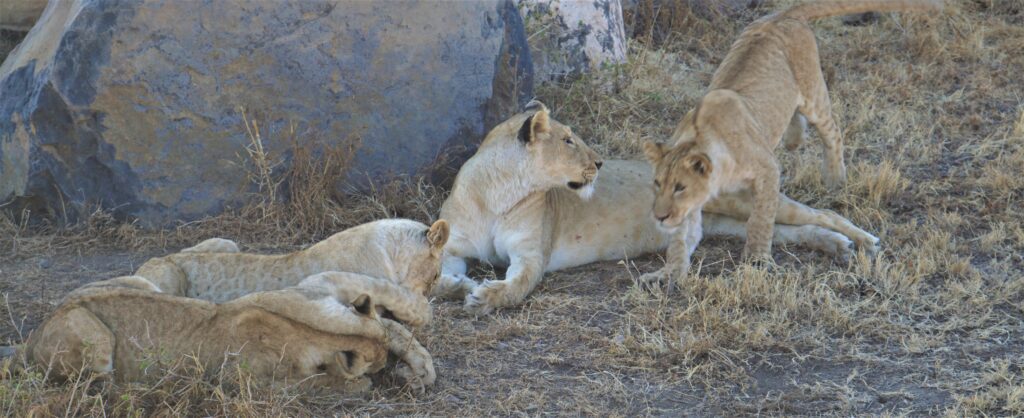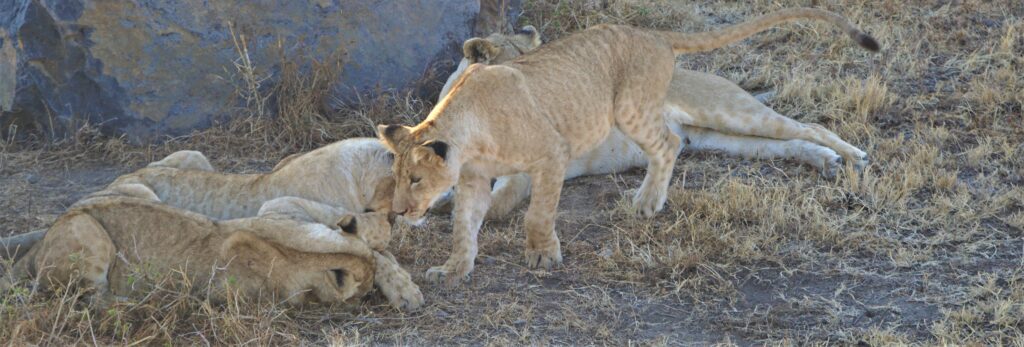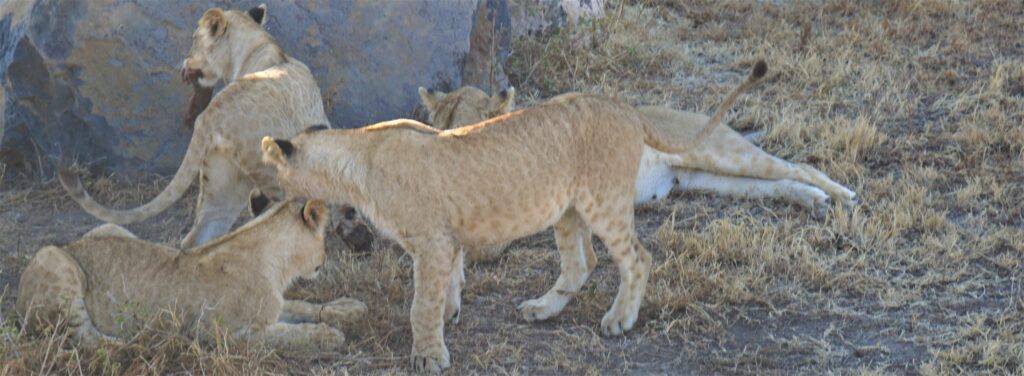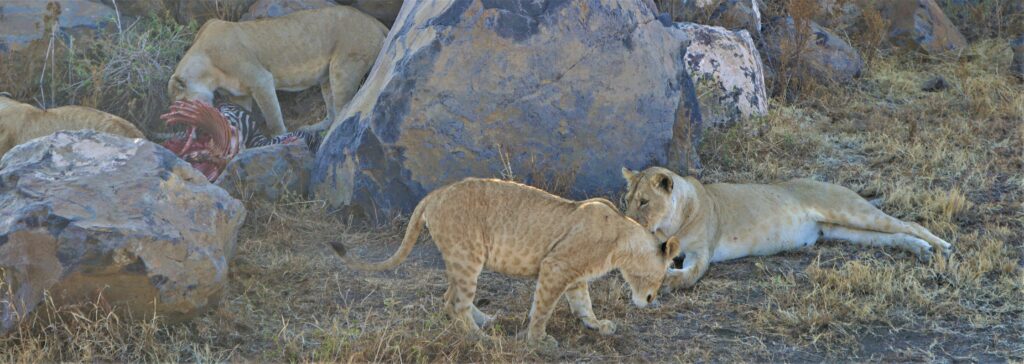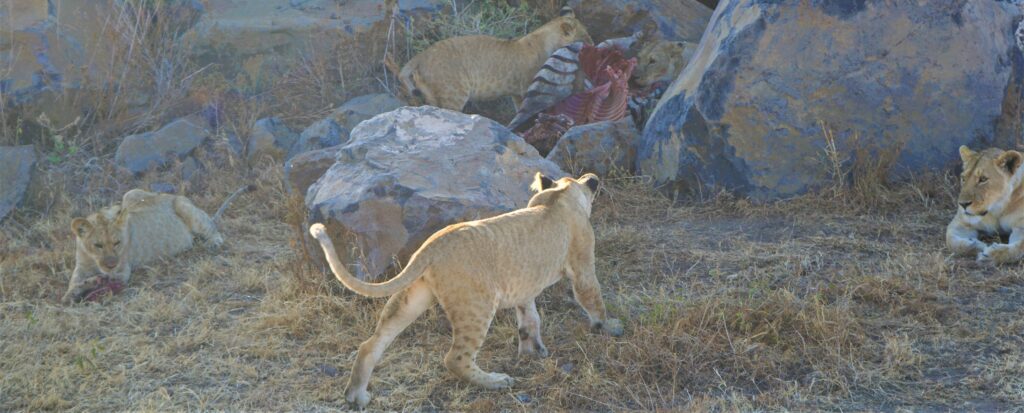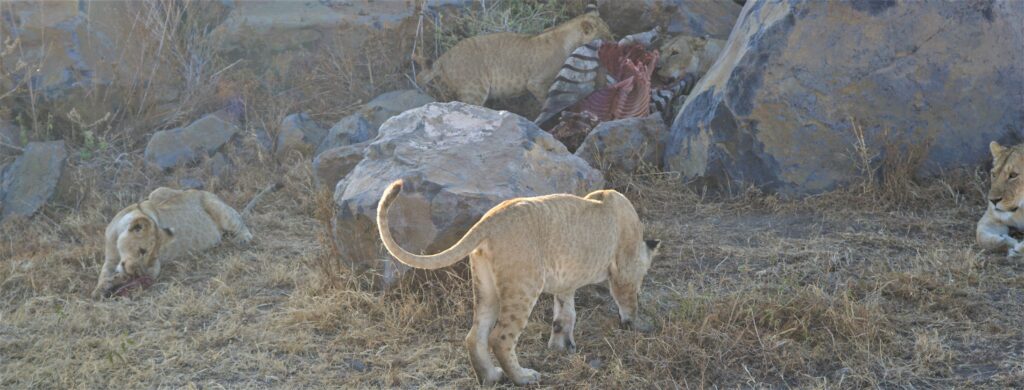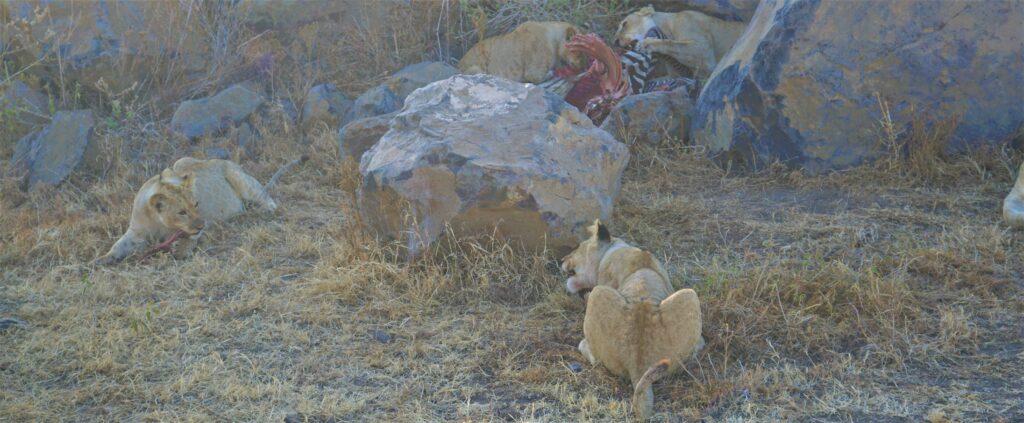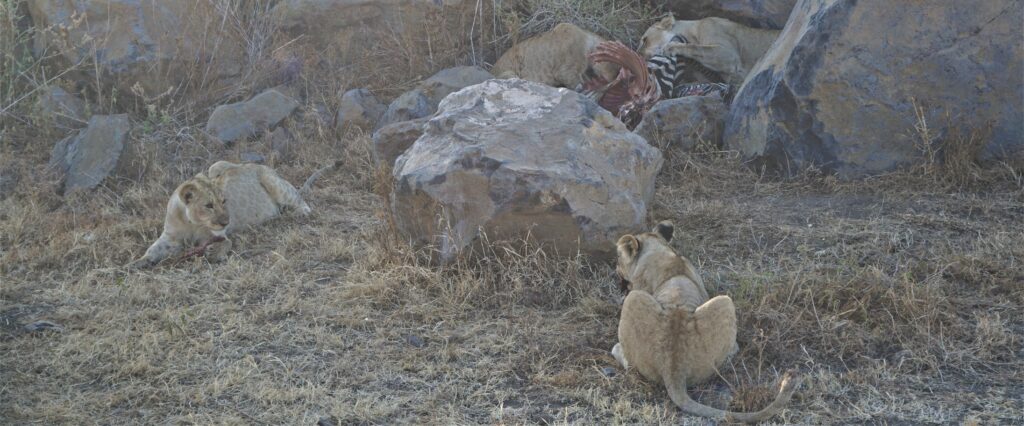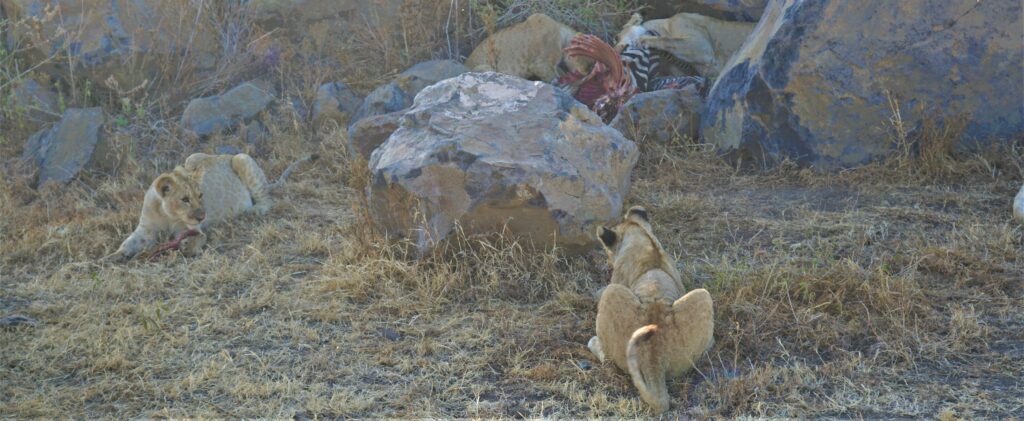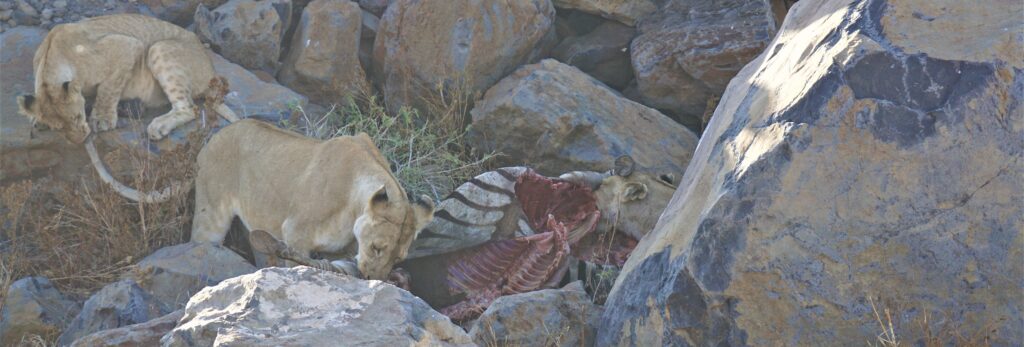» posted on Wednesday, September 21st, 2022 by Linda Lou Burton
A 10-Minute Slice
Linda Lou Burton posting from Ngorongoro Serena Safari Lodge, Ngorongoro Crater, Tanzania– Another promise kept. Partly. I promised a Post with Rick’s photos from his day in the crater, but gee, when I started looking at his photos, one 10-minute segment rose to the top like cream in a bucket of fresh Jersey milk. So here goes, a Beatrix Potter kind of story. For background, you need to know this: the lion population in Ngorongoro Crater is denser 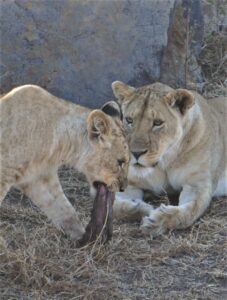 than anywhere else in Africa. Not the most lions of any protected area, but the most per square mile of land. And, they have their own ingrown quirks. Remember this: the Crater is a CLOSED area. The caldera is 100 square miles of land filled with grasses, water sources, and cover, often called a Garden of Eden. In other areas, such as the Serengeti-Maasai Mara, animals migrate by the millions in a year-round cycle, following food sources. In the Crater, they don’t have to. Climb Every Mountain isn’t their theme song; they just stay put! Rick and the gang came upon this pride (family) of Mom and Kids at meal time. Does Roger get to keep his chunk of zebra meat? Do his brothers manage to snatch it away? How does Mom manage the standoff? A cute (and typical kids!) story, any way you slice it.
than anywhere else in Africa. Not the most lions of any protected area, but the most per square mile of land. And, they have their own ingrown quirks. Remember this: the Crater is a CLOSED area. The caldera is 100 square miles of land filled with grasses, water sources, and cover, often called a Garden of Eden. In other areas, such as the Serengeti-Maasai Mara, animals migrate by the millions in a year-round cycle, following food sources. In the Crater, they don’t have to. Climb Every Mountain isn’t their theme song; they just stay put! Rick and the gang came upon this pride (family) of Mom and Kids at meal time. Does Roger get to keep his chunk of zebra meat? Do his brothers manage to snatch it away? How does Mom manage the standoff? A cute (and typical kids!) story, any way you slice it. 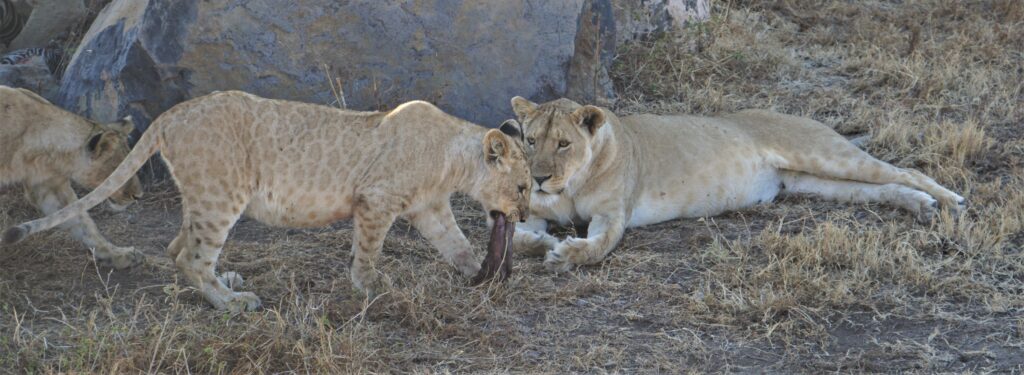
Research on Ngorongoro Crater Lions https://kopelion.org/ngorongoro-lions/
This is KopeLion: KopeLion strives to foster human-lion coexistence in Ngorongoro Conservation Area. Here intensifying human-wildlife conflicts has been tough on the lions. In the last decades, the lions have begun to disappear entirely from their former ranges, separating the famous Ngorongoro Crater lions from the Serengeti. The area’s mission for harmonious coexistence is collapsing, with both people and wildlife losing out. KopeLion was founded in 2011 with the aim to change this trend. By working directly with residents, KopeLion strives for sustainable human-lion coexistence in Ngorongoro for the benefit of both people and lions. KopeLion, comprised of local experts and international scientists, employs former lion hunters to actively protect the remaining lions and reduce conflicts. Our work builds upon data collected over the last 50 years, representing the best-known, best-studied lions in the world. This offers the unique opportunity to measure the effects of our efforts on a population of lions, studied for generations.
The Ngorongoro Crater lion population is uniquely important. Studied almost continuously since 1963, it is the best-known, best-studied lion population in the world. Having become physically separated from the lion population in the nearby Serengeti National Park, the Crater lions have become a textbook example of the challenges facing an isolated inbred population. Our ongoing efforts to restore the connection between the Serengeti and the Crater offer a rare opportunity to measure the effects of lion conservation efforts in a population whose every member is individually recognized and observed over its entire lifespan. We receive a wealth of data on fine-scale movement, behaviors, and prey choice from a few “multi-use area lions” that we managed to GPS collar. One of the striking findings is lions’ capacity to adapt to living among people and livestock. While they clearly avoid areas with settlement and activities in the daytime, they seem to hesitate little to pass close by homesteads in the night.
Next Post: More From The Crater Floor


